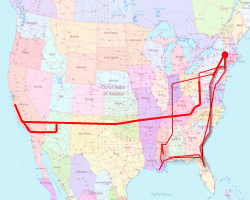COAL IN YOUR STOCKING THIS CHRISTMAS: CNN
CNN’s report on coal ash was welcome attention from a national news outlet for the people near Little Blue Run. But the coverage left a mis-impression and was neither objective nor without bias as CNN often claims. The coal industry is one of CNN’s sponsors, and their commercial airing during the report is tantamount to a rebuttal of the claims of the citizens harmed by the industry. Not only is the commercial inaccurate propaganda; the industry perspective is furthered by the reporting. Some of CNN’s news report was wrong or uninformed. Opinion was given as fact, and worse, it was the opinion of the sponsor. It cannot be considered objective journalism to report on a story when one of the parties is a supporting it financially. In fact, After the Press considers the very idea of objectivity to be false and misleading. After the Press does not claim to be objective and instead provides the views of Paul Joffe, whose opinions are clearly stated. Little Blue Run is a coal ash dump owned by First Energy. The company promised the residents back in the ’70s that it would build a retention pond that they could use for boating and recreation — just like the one shown in the Clean Coal commercial. At this time there is no operational Clean Coal technology. Coal contains small amounts of heavy metals like selenium, cadmium, arsenic, and lead. When coal is burned, whatever doesn’t burn is left over, and it’s called fly ash. Heavy metals don’t burn, so they are concentrated in the fly ash. In creating Little Blue Run, the waste dump, First Energy mixes the ash with water and pumps it through a large pipe to a valley that they bought in rural Pennsylvania and West Virginia. The flow of ash-water filled up an entire farming valley on the border between those two states, and a dam was built to hold back the ash mud. No liner was installed to keep the heavy metals from percolating into the water table and poisoning local wells. As the water evaporates from the top of the dump, the ash forms a dry layer. The ash is called fly ash because it is very light and will blow away in a wind; however, no cap was installed to keep that from happening. A similar fly ash dam-dump collapsed in Kingston, Tennessee, leading to a violent poisonous flood. There was another “waste impoundment” flood in Hungary outside a copper factory. CNN’s report followed the Hungarian collapse, which was covered briefly on the same program. However, again, CNN is sponsored by the coal industry’s trade association: “The Coalition for Clean Coal”, which promotes the fiction that new technology makes burning coal clean. In reality First Energy won’t even use old technology to clean up their toxic waste dump. The air around the plant is so toxic that it pits car paint. First Energy’s answer to that is paying for paint jobs on local cars.




